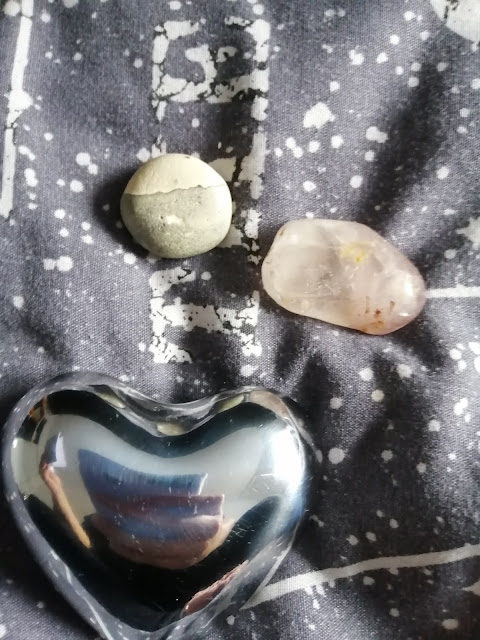Part of the Distress Tolerance module of DBT, creating a Soothe/Distract Kit can really help you out in a pinch. It helps you to put the distress tolerance skills in a more physical place that doesn't require much thought. If you're feeling overwhelmed, but still have the ability to open up your toolkit, then this is the time to prevent your emotions from taking control. Alternatively, you've just used your STOP and TIPP skills, and now you need to bring down your emotional arousal.
Each person's toolkit will look different and is extremely personal to the owner. It needs to reflect what helps to take you away from the situation and what helps to calm you. Today I wanted to walk you through what's in my Soothe/Distract Toolkit.
So I think the best way to start is to find a nice box or gift bag. My toolkit resides in a shoebox, but mainly because I love The Nightmare Before Christmas. If you have a more plain box then you can decorate it with patterns or themes you like.Under the lid I've put ways to soothe my senses that you can't box up. Such as suggestions to listen to soothing music or using my weighted blanket. There are a list of extra distractions as well. Finally I've put some self-affirming coping statements to help me feel more confident.
I have quite a few items for touch. I have some more physical distractions here. The green thing is called a tangle. It's bits of plastic that you can rotate and make different shapes with. I find it to be good for channeling anxious energy or grounding yourself. You can get them online, but I got mine for free during one of my mental health admissions. You can see some bath items here such as salts and a bath bomb. If you can manage to run a bath whilst you're feeling overwhelmed then they are good for focussing your senses. Again the dragon balm and a lip balm can be used for the sense of touch. Smooth stones or other textured things can also be good.
Here are some visual items. Anything you enjoy looking at. I have a stone I found on a beach walk with my partner some years ago (it also holds a happy memory). Some people use pictures of loved ones or maybe stickers you can put over the inside of your toolkit if it's a box. Not everyone will want to do this and it's not necessarily covered in DBT, but for years I have kept letters to myself. Usually they talk about better times and self-encouragement. I've found them helpful when I'm in a crisis and don't feel like I know who I am. Letters from loved ones can also be helpful, but I'd be wary about using ones from partners incase of a breakdown in the relationship or the crisis being triggered by something related to them . Items for soothing can be easily kept in your toolkit, but distractions need a bit more creativity. I bought a really small flip book and wrote a distraction activity on each page. That way I can flip through and see what I land on. If I don't feel like doing that one I can move to the next. It doesn't take long to do and you can always add to it.
So there you have it. My emergency self-care kit based off of what I've learned in DBT. You don't have to be involved in DBT or even have BPD to use one of these. Personally I think we should all be taught skills like this as children. Learning how to distract and soothe myself rather than relying on others has been a godsend. It has also made it easier on my partner, because there is a physical aid he can give me to help me cope better. I'd highly recommend creating one of these toolkits, as I get so much use out of mine.










No comments:
Post a Comment